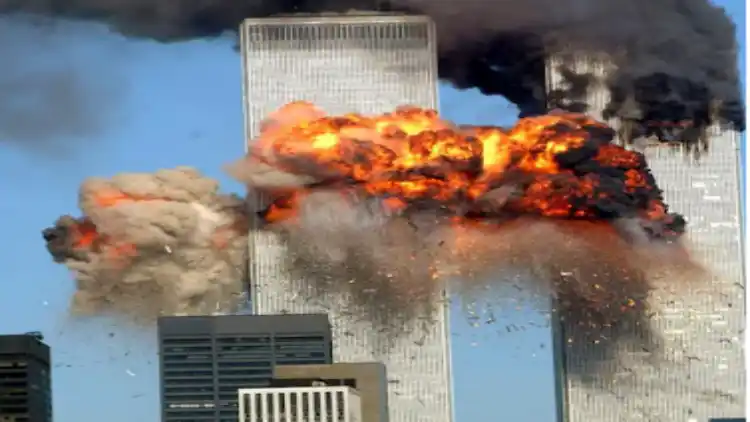
 Aasha Khosa
Aasha Khosa
It was a usual sultry day in Delhi. In the morning, I had received a surprise call from a Kashmiri separatist leader Abdul Ghani Lone. He wanted to see me. Obviously it was an offer for an interview. I had reached his south Delhi apartment in the afternoon. From my 10-year experience of Kashmir, I knew these separatist leaders were good at pep-talk but rarely spoke honestly, leaving news hounds like me dissatisfied.
That day, Lone was in a different mood. He didn’t seem bothered about the niceties of a formal interview or a disclaimer of an informal media interaction. Without waiting for me to ask him a question or clearing the terms of the interview, he started a speech. Initially, I didn’t get it and found myself interrupting him. He cut me short and said: You simply listen to me and note down what I am saying.
I started listening to a man whom I had known as a fearless politician, a golfer and a kind of maverick. It was a monologue; he was saying things that I could never imagine.
He told me that Pakistan’s policy of sending mercenaries to Kashmir to carry on ‘jihad’ and terror had damaged the cause of Kashmir. He said because of the mercenaries, the cause has got painted as terrorism. He even called for ending the use of the gun for ‘azadi.’ In simple term, he was asking Pakistan to buzz off from sponsoring terrorism in Kashmir even though he too had received the largess from Islamabad to form a mujahideen group Janbaz Force that was a dud before it would start its work.
I excitedly drove to the office imagining my story on the front page of the newspaper the next day.
In the office, it was a different scene. All were huddled into the newsroom, watching what was beyond the imagination of anyone in the world: New York and Manhattan skyscrapers were being hit by airplanes. Terror was being broadcast live to the world and so was the fear.
My story looked trivia in front of this scene yet there was a connection between the two.
As a young reporter covering terrorism in Kashmir for ten years (1989-99), I always wondered why the world doesn’t see the game that Pakistan was playing by exporting terror to Kashmir. My assessment of Pakistan’s involvement was based on the ground situation. I would meet many Pakistani terrorists who were caught; Kashmiris who openly spoke about being trained in terror tactics in Pakistan after they were caught or others whom we, the journalists, met occasionally at their secret locations.
“India is a soft state,” was the only reply that I got from senior authorities in Delhi when they visited Kashmir and I put this question to them. It didn’t make sense.
The images of airplanes ramming into the multistory buildings had shaken the West of its premise that terrorism is a third world problem and probably confined to the south-Asian and African countries. On India’s being hit by State sponsored terrorism by Pakistan, the West often drew the usual equivalence and advised both the countries to ‘talks into settling the issue.” For them a perpetrator and a victim of terror was the same.” They didn’t care.
After 9/11, a furious American forced Pakistan to join it in hunting Islamic terrorists that had proliferated in the congenial ecosystem provided by Pakistan and lived off happily in neighbouring Afghanistan that was ruled by the Taliban (1996-2001). The fact that Islamabad was a reluctant partner who cheated on both terrorists and the USA was to get exposed soon. Pakistan was exposed to the powers that had patronized and shielded it for its rouge behaviour. The mounting pressures on Pakistan augured well for India and helped it fight against its game plan in Kashmir. Yes, Lone was right – mercenaries should not be allowed to flourish anywhere and they should not be outsourced political movements. (it’s another story that Lone was assassinated seven months later by Pakistani agents)
For the first time, India’s position was more understood in the world. Condemnation of terrorism began and ‘proxy war’ became the buzz word.
As a reporter who had covered terrorism, political unrest and proxy war for one third of her career, I noticed the change in world’s attitude. More dignitaries visiting India spoke of the common resolve to fight terrorism. Pakistan was humiliated as the dignitaries like US secretary of State Richard Armitage said that unless it cooperated in fighting terror, Pakistan would be carpet bombed to stone age and Hillary Clinton’s barb “if you rear snakes in your backyard they would come to bite you.”
India was getting aggressive with Pakistan and leaving nothing to chance in exposing the country’s terror industry. The world was taking India’s input on Islamic terrorism and Pakistan’s role in helping it grow more seriously. Countries with far superior mechanisms were sharing intelligence and selling India gadgetry to track the terrorist, their finances and sponsors. Pakistan’s image as a terror-sponsor was getting confirmed.
However, India’s terror-fighting machinery was yet not in top gear and lacked the cutting edge expertise and intention. Managing the situation in Kashmir by eliminating terrorists, fencing the Line of control and even the international border with Pakistan was okay but these were mostly defensive moves.
It took India seven more years and yet another spectacle of terror to be broadcast straight into drawing rooms across the world to come of age as a deadly anti-terror force. The deadly terror attacks by the sea borne Pakistani terrorists on Mumbai that we recall as 26/11, finally made India shed its sloth like attitude and give itself mechanisms and institutions to counter global terror threats. The National Investigation Agency came into being; the NGS was given more ware withal and India’s shopping list for snooping devices started was circulated. India was forging intelligence sharing pacts with countries that have far more superiority in such matters.
Again, India’s irrefutable evidence of the 26/11 perpetrators being managed from Pakistan possibly by former Army officers who had joined Lashkar either as rouges or deliberately, was also thanks to the US help that had started coming after the 9/11.
